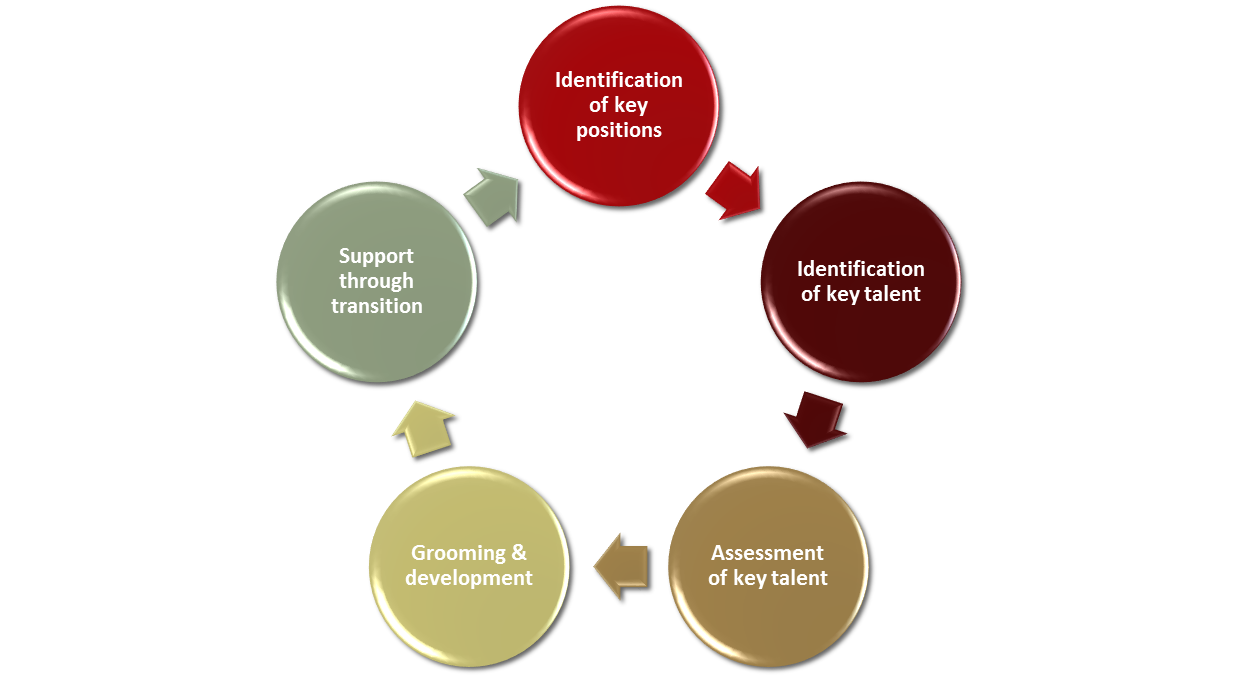Succession Planning
A process of identifying, developing and transitioning potential successors for the company’s present and future roles; aligned with the talent and ambition of current employees and the talent network.
5 key elements of succession planning
 Pivotal roles
Pivotal roles
Roles that are essential to the company’s future.
Examples are roles with:
- Large span of control
- Large budgetary responsibilities
- Senior and strategic roles
- Customer contact roles
- Specialists roles
Bench strength roles
The competence and number of employees ready to fill vacant leadership and other positions when the need arises.
Bench strength speaks to:
- Depth of an organization, not just quality (developed successors)
- Quantity (number of developed successors)
Goals of the Succession Planning Process
- Prioritize people performance
- Highlight the link between performance and business success
- Identify potential leaders, talent opportunities and skill gaps within the business
- Manage succession as leaders depart and establish business continuity
- Increase accountability for talent growth and assessment throughout the business
- Provide a compelling career path within the organization
- Aid recruiting and retention and be known as a business that develops leaders
For information on speaking availability and additional topics please contact Rocky directly at:
Rocky Romanella
Phone: 610-322-0720
Email: [email protected]


